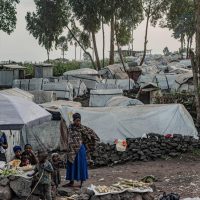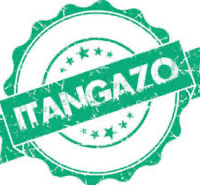Kwita Izina has become Rwanda’s brand for gorilla conservation by giving names to newborn gorilla babies.
The practice originates from Rwanda’s old cultural tradition where family members would invite friends and relatives to give a name to a newborn child in the family.
They would cook some food mainly to be enjoyed by children who came along with their parents (Kurya ubunnyano), while the old people were entertained on traditional drinks.
Kwita Izina ceremony, therefore, meant a number of things to the family and community, like welcoming the newborn baby into society and by people coming together for the occasion, signifying the value (Agaciro) attached to the newborn baby.
The name would also give the child identity and belonging, while the community had the responsibility to protect the child from any possible harm or danger.
Looking after children was not a duty of his or her family alone since the society believed in the collective responsibility towards child upbringing (Umwana n’uwumuryango).
The 15th edition of Kwita Izina in Kinigi saw the naming of 25 baby gorillas and the event attracted thousands of neighbours-the communities around the gorilla park.
These people are very important in the conservation story since they can either protect the animals or they become their enemies when they turn into poachers or killers of the animals in case they go beyond the boundaries of their habitat to encroach on crops of the people around the park, (human-animal conflict).
Rwanda’s Homegrown-innovative conservation practice of Kwita Izina, has not only attracted neighbouring communities, but also world re-known celebrities, Rwanda’s prominent personalities and high ranking dignitaries in various capacities; from within and abroad.
The occasion was presided over by the President of the Republic of Rwanda, Paul Kagame.
The profile of attendees shows that the importance of gorilla conservation (Agaciro) is given in the same way a newborn baby in the Rwandan family.
President Kagame has been at the forefront of leading by example, the conservation of endangered mountain gorillas and other wild life in Rwanda’s national parks; and that is the reason for his presence during the Kwita Izina ceremony.
President Kagame does not stop at the foothills of the gorilla park during such ceremonies, but he also treks high in the mountains to see the primates.
Those who have listened to the President talking about conservation, have heard this fascinating story when a silverback gorilla charged at him with his visitors and they all had to humble themselves and show submission to the giant primate.
One of the president’s visitors joked to him that, “tell the silverback that you are the president of Rwanda’’!
The communities around the park have been sensitized to become gorilla conservation partners, some of whom were poachers in the past, and now have turned into game rangers and guides.
The government has ensured that the living standards of the local communities around the parks are improved by allocating them 10 per cent of the tourism revenue. This creates a strong incentive to protect the gorilla and their environment.
The world celebrities who attended the 15th edition of Kwita Izina like Naomi Campbell, Tony Adams, musicians Meddy, Ne-Yo and politicians like former Ethiopian Prime Minister, Haillemariam Desalegn Boshe, become conservation ambassadors, and attract more tourists and more revenue for the country.
Figures from Rwanda Development indicate that gorilla trekking raised $19.2 million in annual foreign exchange revenues in 2018, representing a 25 per cent growth compared to the previous year.
Due to good conservation practices, the number of gorillas have also increased steadily not only for Rwanda, but for the sole world habitat of gorillas in the forests bordering Rwanda, Uganda and the Democratic Republic of Congo. In 1985, only 300 mountain gorillas were estimated to be left on planet earth, while to date, the total number of gorillas is estimated at around 900.
What lessons does Rwanda’s Kwita Izina present to Africa? The first and foremost is that home grown conservation practices and choices, work much more better from an informed, life lived practical experiences and perspectives than foreign imposed ones. Let me explain.
African countries have been subjected to international treaties which on careful scrutiny, do not serve the interests of Africa’s development aspirations.
Take, for example, the conservation of elephants where the Convention on International Trade in Endangered Species (CITES), advises burning of ivory recovered from poachers as a deterrent to the evil practice of poaching!.
Unfortunately, many African countries have willingly complied although statistics indicate that the policy of burning ivory did not stop poachers from killing the elephants. This is ill advice believing that burning of ivory can stop poaching, is like believing that financial Aid will eliminate poverty from Africa.
In practical terms, it makes no economic sense for Africa to burn ivory and then turn to Western governments and conservation NGOs to ask for conservation support funds.
At one time, I asked one of the campaigners of ivory burning whether if he caught a thief stealing food from his garden and burns it would stop the thief from coming back to steal. The response was baffling.
But I told him that both the food owner and the thief risked starving by burning the food.
Elephants are found only in Africa and Asia, and the two continents had no say in the drafting of The CITES convention signed in Washington in 1973, just like with many other so called international treaties.
It is high time that African countries took charge of what belongs to them, while foreign support and advice is considered secondary, and accepted if it has value addition or fits into the domestic context.
Gerald Mbanda
The Express News










